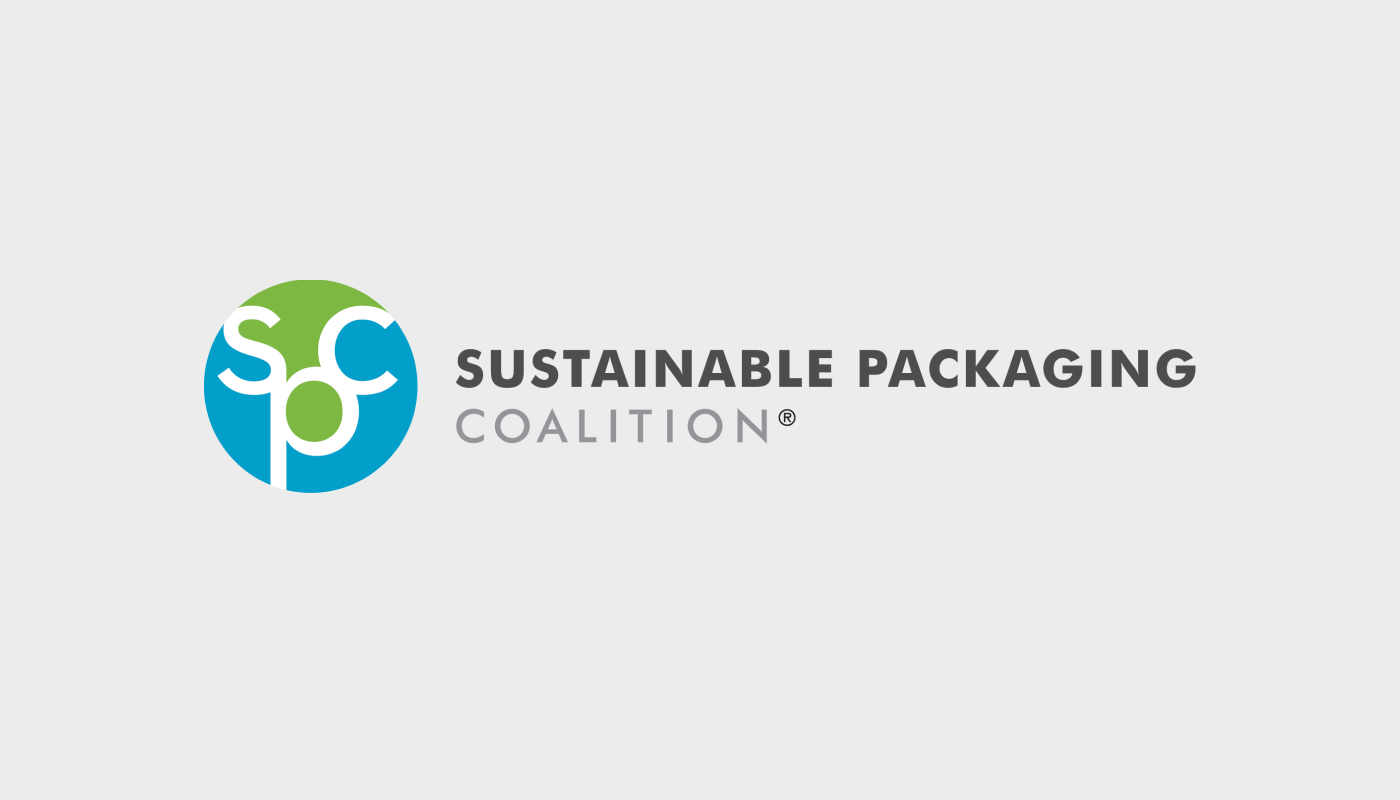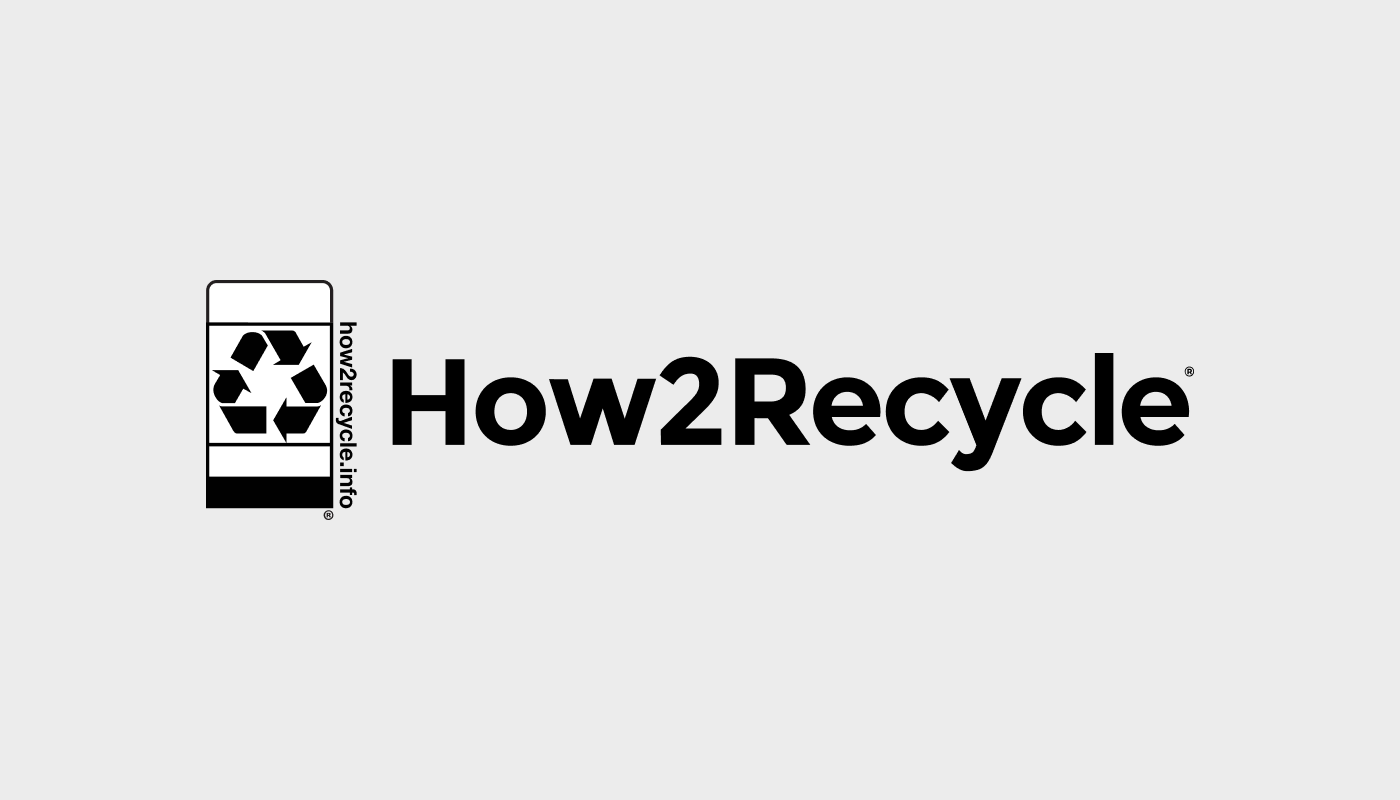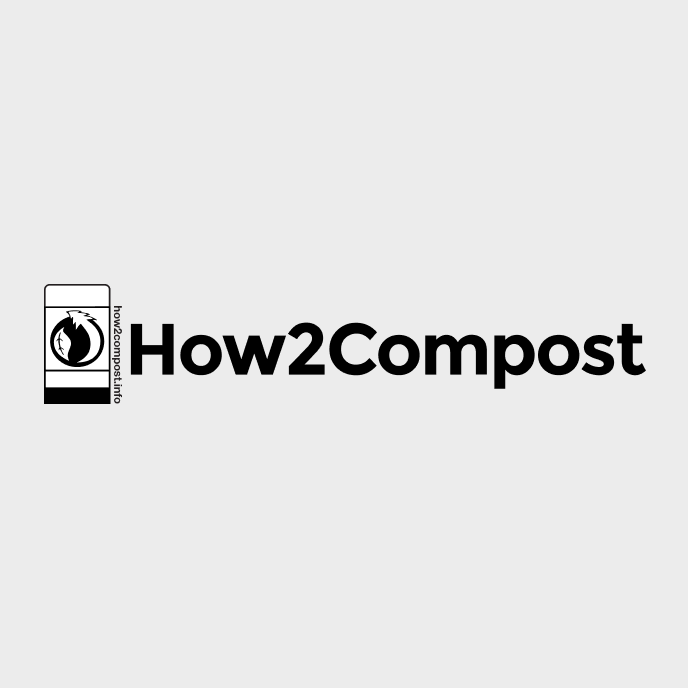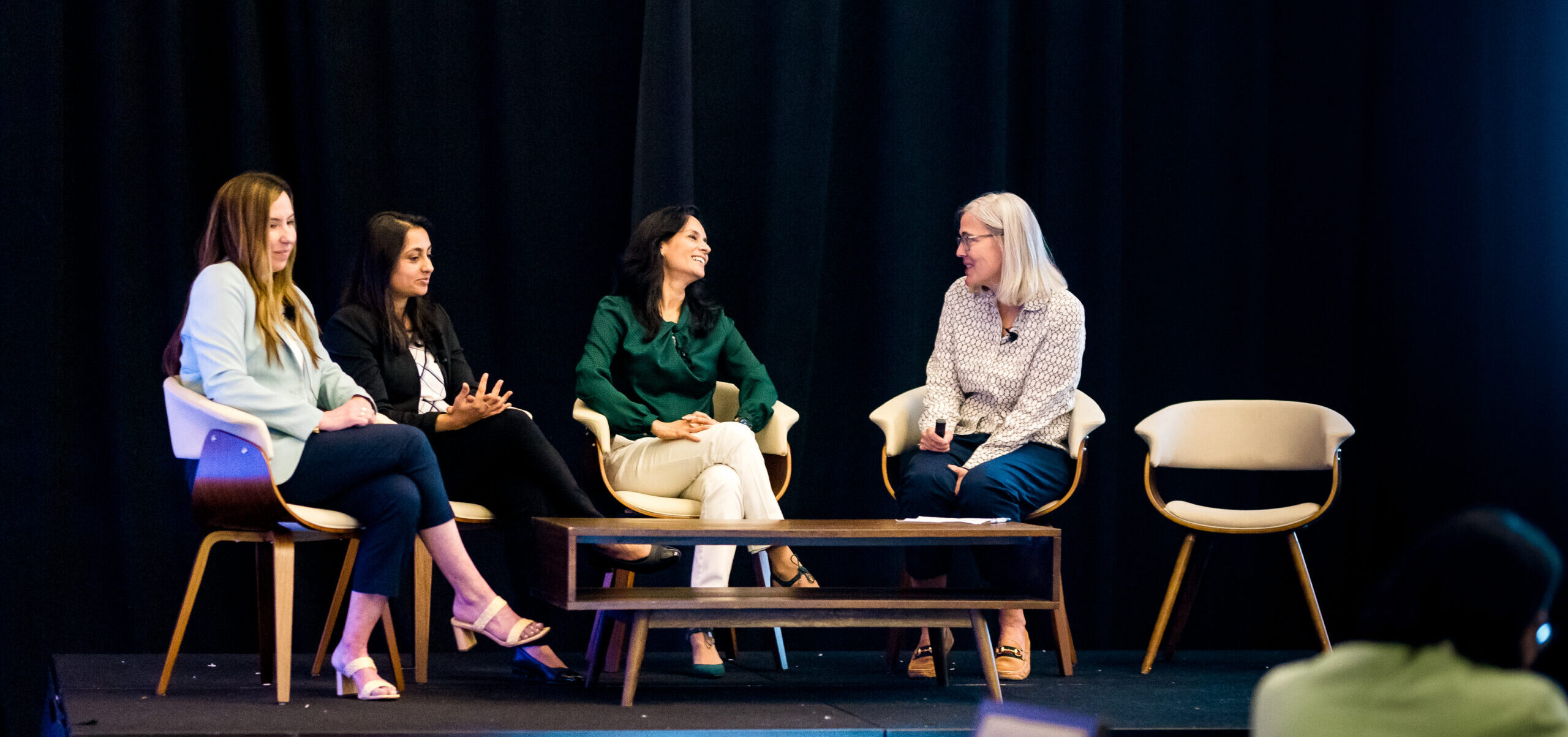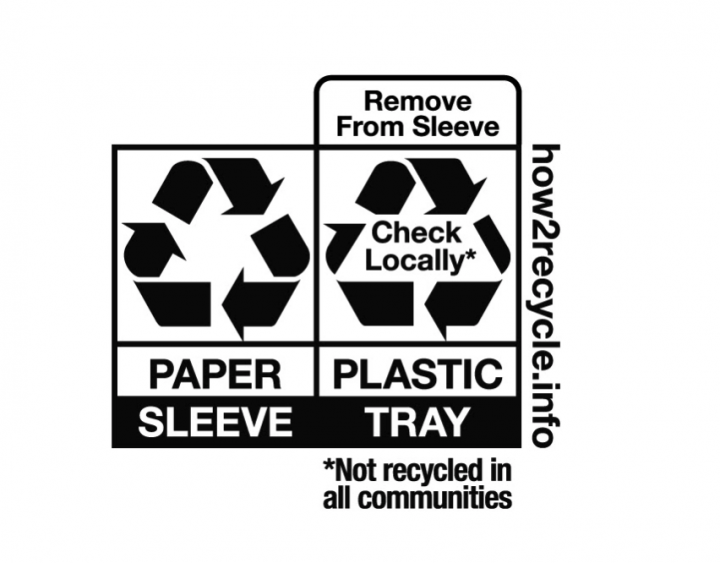
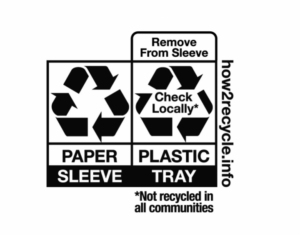
Special instructions (above, “Remove From Sleeve”) are added to the tab above a How2Recycle label tile to tell the consumer any special action that is required before recycling.
This article shares the How2Recycle program’s approach to determining what consumer preparation of packaging for recycling is reasonable, and provides guidance for what good packaging design looks like on this front.
What are special instructions?
Special instructions are used in the upper tab of some How2Recycle labels to communicate to the consumer how the item should be prepared for recycling. There are over 200 variations of special instructions used on How2Recycle labels. Special instructions may be included in the How2Recycle label for a variety of reasons, such as
- To reinforce recycling best practices
- To improve the overall clarity of the How2Recycle label for a specific package
- To increase or ensure the likelihood of the item getting correctly recycled
- To decrease or eliminate any associated contamination in recycling from that item.
What is How2Recycle’s approach for determining whether special instructions are appropriate for a specific package?
How2Recycle takes a balanced and common sense approach to determining whether a special instruction is appropriate. The program seeks to support packaging innovation and is not overly averse to the use of special instructions where needed, but also recognizes the importance of convenience and ease for the consumer to recycle correctly. With that in mind, How2Recycle engages in a case by case analysis of the packaging to assess whether a special instruction is appropriate per the following:
How2Recycle will not provide a special instruction to the consumer if it would be unreasonable to ask the consumer to take the special action. Unreasonable may include, but is not limited to:
- The use of tools, such as scissors
- Actions that require special dexterity
- Actions that require notable use of force
- Actions that require special patience or length of time
- Actions that require any consumer ingenuity (such as finding another package to nest the package inside)
- Actions that may put the safety of the consumer at risk
If How2Recycle cannot provide a special instruction because the action required would be unreasonable per the above criteria, the entire package will be deemed Not Yet Recyclable.
Exceptions may be made for special actions that are well-known and generally accepted by the general public to prepare the item for recycling (for example, flattening corrugate boxes).
Specifically, effective July 31, 2021 How2Recycle will not provide a special instruction to the consumer to recycle the package, and the package will receive Not Yet Recyclable, for:
- Removal of full body shrink sleeve labels on plastic containers that do not have full-length perforation
- Removal of high coverage pressure-sensitive or other types of labels on plastic containers that are not very easy to remove
- Removal of pressure-sensitive non-PE labels on PE film that are not very easy to remove
Note that not all labels on packaging require removal in order for an item to be recyclable. How2Recycle assesses in-depth packaging information to determine whether labels impact recyclability in each instance based on a variety of considerations. Some companies have innovated labels (including full body shrink sleeve labels) that are preferred by recyclers and do not require any separation at all—use of these labels is strongly recommended. Labels that do not require consumer removal at all are much better than labels that are perforated but still require removal. For more detail, visit the APR’s Design® Recognition Program.
Note that paper packaging is more sensitive to product contamination in recycling than all other materials, so special instructions may be more stringent or altogether unavailable. Further research is required to determine what is sufficiently “clean & dry” for certain product applications for paper packaging. How2Recycle will update members when further guidance is available.
How2Recycle may not be able to provide a special instruction even if it’s reasonable if end markets cannot be positively demonstrated for that item. Recyclers may be intolerant of the package type or its associated contamination levels regardless of whether a special action is taken or not. In other words, special instructions cannot be used as a lever to overcome certain end market challenges.
The type of special instruction provided (meaning, the way the special instruction is worded or treated in the label design) will depend on a variety of factors including but not limited to:
- Ensuring avoiding consumer deception regarding what it takes in order for the item to get recycled. This may mean in the presence of uncertainty as to the appropriate strength of the instruction, How2Recycle will err on the side of conservative and provide a more strongly worded instruction or render the package Not Yet Recyclable.
- Consistency with other labels previously issued for similar packages
- The level and type of concern from recyclers if special action is not taken
- Common sense and empathy for the consumer
Note that in the interest of standardization, How2Recycle cannot provide custom or different consumer preparation instructions to a member by request. Special instructions may be adjusted or eliminated altogether if member presents compelling and unambiguous data demonstrating another instruction is superior for recycling or if the instruction is unnecessary for recyclers to recycle the item properly (for more insight on what is compelling data, see the How2Recycle Guide to Future Recyclability). Special instructions will not be softened or adjusted to convey an appearance that the special action is less burdensome.
How2Recycle may undertake further research or analysis to provide greater specificity to this rule in the future.
Given all this, what does good packaging design look like in terms of consumer preparation for it to get recycled correctly?
Good packaging design means no separation is required at all. Separation is required where packaging components are made of different materials that flow through different streams in the recycling system and so need to be placed in the recycling bin separately, or where some part of the package would constitute contamination to a degree that requires it be removed and discarded. The packages that are best designed for recyclability are those that are made of one material only.
If separation is absolutely required, How2Recycle recommends that:
- The separation occurs as a normal part of use of the product and is not something that only happens at the point of disposal
- The separated pieces each remain wholly intact and maintain their physical integrity
- The special action is quick, requires negligible force, and is able to be easily understood and accomplished by all members of society regardless of age or ability.
For more insights on packaging recyclability, visit the How2Recycle Insights report.

